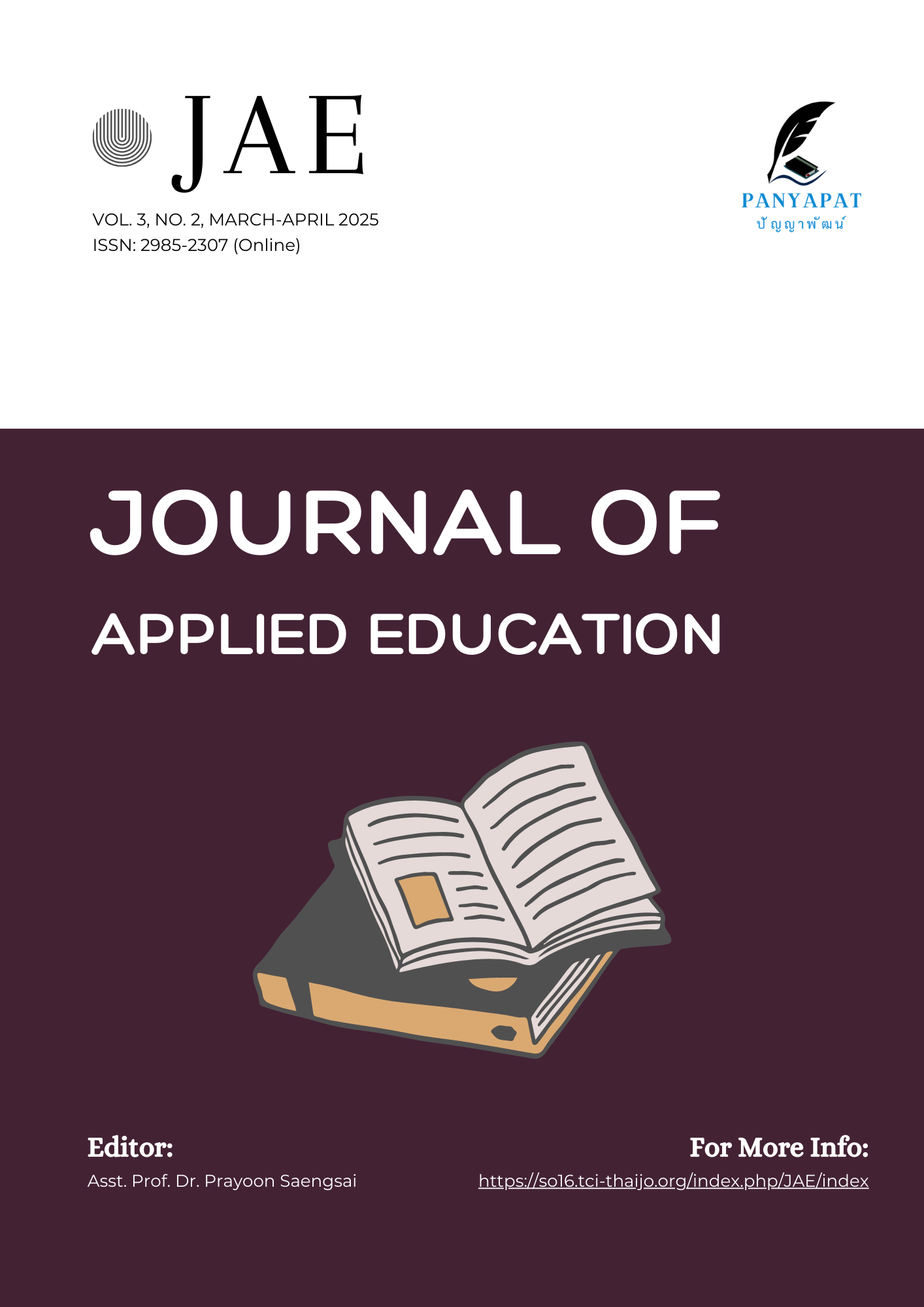Evaluation of the Healthy Lifestyle Program for Triamudomsouth Students Nakhon Si Thammarat Secondary Educational Service Area Office
Main Article Content
Abstract
This research aimed to: (1) evaluate the context, (2) evaluate the input factors, (3) evaluate the process, and (4) evaluate the product outcomes of the “Healthy Lifestyle for Pre-University Students” project at the Southern Preparatory School under the jurisdiction of the Nakhon Si Thammarat Secondary Educational Service Area Office. The sample consisted of 543 participants, including 4 school administrators, 70 teachers, and 469 Grade 10 students, selected through stratified random sampling. The evaluation instruments comprised context evaluation forms, input evaluation forms, process evaluation forms, and product evaluation forms focusing on knowledge and understanding of the National Health Edict and satisfaction with the “Healthy Lifestyle for Pre-University Students” project. Data was analyzed using mean scores and standard deviations. The evaluation criteria were based on a mean score of 3.50 or higher according to Best’s guidelines. The findings revealed that: (1) the evaluation of the project’s context met the established criteria; (2) the evaluation of input factors met the established criteria; (3) the evaluation of the process met the established criteria; and (4) the evaluation of the product outcomes — both in terms of students’ knowledge and understanding of the National Health Edict and the satisfaction levels of administrators, teachers, and students toward the project — also met the established criteria.
Article Details

This work is licensed under a Creative Commons Attribution-NonCommercial-NoDerivatives 4.0 International License.
References
กรมอนามัย. (2562). คู่มือการดำเนินงานโรงเรียนส่งเสริมสุขภาพ (ฉบับปรับปรุง พ.ศ. 2558). (พิมพ์ครั้งที่ 4). กรุงเทพฯ: องค์การสงเคราะห์ทหารผ่านศึก.
นิภา การประกอบ. (2562). การประเมินโครงการโรงเรียนส่งเสริมสุขภาพโรงเรียนบ้านทุ่งนุ้ย สังกัดสำนักงานเขตพื้นที่การศึกษาประถมศึกษากระบี่. นครศรีธรรมราช: มหาวิทยาลัยราชภัฏนครศรีธรรมราช.
พัชรี สุวรรณสุข. (2560). การศึกษาผลกระทบของโครงการโรงเรียนส่งเสริมสุขภาพต่อพฤติกรรมการดูแลสุขภาพของนักเรียนในจังหวัดอุดรธานี. (ศึกษาศาสตรมหาบัณฑิต, มหาวิทยาลัยขอนแก่น).
สำนักงานคณะกรรมการพัฒนาการเศรษฐกิจและสังคมแห่งชาติ. (2566). แผนพัฒนาเศรษฐกิจและสังคมแห่งชาติ ฉบับที่ 13 (พ.ศ. 2566-2570). กรุงเทพฯ: สำนักงานคณะกรรมการพัฒนาการเศรษฐกิจและสังคมแห่งชาติ.
สำนักส่งเสริมสุขภาพ. (2557). แนวทางการส่งเสริมสุขภาพป้องกันโรคเด็กวัยเรียนและเยาวชน. กรุงเทพฯ: ศูนย์สื่อสิ่งพิมพ์แก้วเจ้าจอม มหาวิทยาลัยราชภัฏสวนสุนันทา.
อุบล หนูมาก. (2557). รายงานการประเมินโครงการการจัดการศึกษาแบบมีส่วนร่วมขององค์กร ในชุมชนเพื่อส่งเสริมสุขภาวะของนักเรียนโรงเรียนวัดฝาละมี ปีการศึกษา 2556. พัทลุง: สำนักงานเขตพื้นที่การศึกษาประถมศึกษาพัทลุง เขต 2.
Kaufman, R., & Keller, J. M. (1994). Levels of evaluation: Beyond Kirkpatrick. Human resource development quarterly, 5(4), 371.
Krejcie, R. V., & Morgan, D. W. (1970). Determining sample size for research activities. Educational and Psychological Measurement, 30(3), 607–610.
Lee, P. Y., & Lau, K. W. (2018). A Digital Games Design for Children Health Promotion and Education in Hong Kong. The Journal of School Health, 6, 428-432.
Stufflebeam, D. L. (2003). The CIPP Model for Evaluation. Portland, Oregon: Annual Conference on the Oregon Program Evaluators Network (OPEN).

